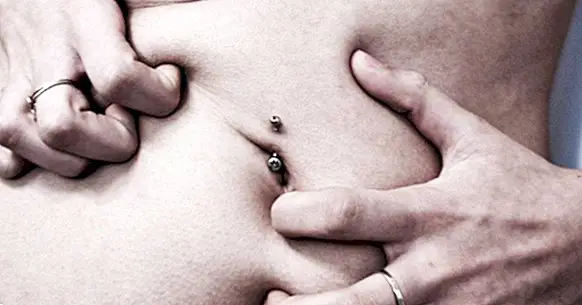Types of anorexia (symptoms, causes and characteristics)
Anorexia nervosa is one of the most well-known eating disorders and with the greatest media exposure. However, we must bear in mind that this alteration does not consist of a set of symptoms that always appear together in the same way.
That is why, if we want to specify more and describe in more detail the way in which this affectation is expressed, you have to talk about types of anorexia nervosa .
But, before focusing on this classification, let's go to the most basic: the definition of this disorder.
- Related article: "The 4 types of bulimia and their characteristics"
What is anorexia?
Etymologically, the term "anorexia" it means "lack of hunger" . This fact is already giving us a clue about the nature of anorexia nervosa; It is an eating disorder one of whose main symptoms is the lack of food and drink intake beyond water.
Thus, the word anorexia refers to the lack of appetite, a symptom present in the typical clinical picture of various disorders and diseases, while anorexia nervosa is a specific eating disorder, not a symptom . Specifically, anorexia nervosa is a disorder characterized by an interest in losing weight and body volume led to a pathological end, materialized in the constant refusal to eat to avoid weight gain.
In this way, regardless of the type of anorexia nervosa we are talking about, this disorder causes people to become so thin or to carry a diet so scarce and harmful that your health is in grave danger .
- Maybe you're interested: "The 10 most common eating disorders"
Some symptoms
The symptoms that characterize the different types of anorexia nervous (regardless of which is presented in each case) are the following:
- Body Mass Index significantly below the average for the age and sex of the person.
- Headaches
- Bradycardia (drop in heart rate).
- Anxiety.
- Obsession by the count of calories of what is consumed.
- Feeling tired.
- Abnormally dry skin (xerosis)
- Hypotension
- In addition, in very serious and advanced cases it can cause:
- Amenorrhea (disappearance of menstruation).
- Malnutrition.
Types of anorexia nervosa
Now that we have seen the basic characteristics of the disorder, let's turn to the types of anorexia nervosa and their characteristics.
Fundamentally, the types of anorexia are two: purging anorexia and restrictive anorexia.
1. Purging anorexia
Anorexia nervosa of the purgative type It is characterized by presenting stages of purge , which usually consist of vomiting and, in some cases, the use of diuretics or laxatives.
Before the purge phase, there is a phase of binge eating that is experienced as an uncontrollable impulse that leads to eating quickly and chewing little.
The typical profile of purulent anorexia patients are female adolescents with a tendency to impulsivity and to the thoughts of constant self-assessment based on your physical appearance.
The difference between purging anorexia and bulimia, which is a very similar eating disorder, is that in the first the body weight is below what is indicated for a person with these characteristics, and is more prone to fall into malnutrition.
- Related article: "5 differences between Anorexia and Bulimia"
2. Restrictive anorexia
No purges occur in this type of anorexia. Instead, there is a constant resistance to the act of eating . The latter is a possibility that is often seen as something disgusting, as it is associated with the process of gaining weight.
So, this type of anorexia is more typical of methodical and perfectionist people, rigid with the norms and capable of extreme self-control , and do not present the impulsive profile of purulent anorexia patients. However, both sex and the typical age range is the same as in the other type of anorexia nervosa.
Causes
It is estimated that both types of anorexia nervosa have a multi-causal origin, do not depend entirely on the genetics or the influence of the environment. The factors that most influence its appearance are these:
1. Family factors
The presence of relatives with mental disorders or neurological disorders who live with the person makes the chances that this develops anorexia nervosa increase. This occurs especially during youth, when they depend more on the family and are more susceptible to imitating patterns of behavior. In the same way, a family environment in which there is a great pressure towards perfectionism also contributes to its appearance.
2. Cultural factors
These are factors related to the type of cultural influences to which the person is exposed. Both the media and the Internet They can show role models that are characterized by extreme thinness, something that is very evident in some social network accounts.
In addition, through social networks it is common to also use images of young people of extreme thinness as referents, and there are even accounts on social networks dedicated to using these photographs to "motivate" others to follow the same steps and resist eat.
3. Individual factors
Heritability plays a role in the risk of developing one of the types of anorexia, and the same happens with other aspects that are strictly non-genetic, as the presence of other disorders diagnosed . The clinical symptoms most related to anorexia are major depression and Obsessive Compulsive Disorder.



















